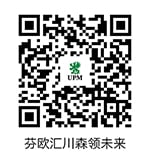Known for their leadership in innovation and sustainability, Henkel AG & Co. KGaA is a German multinational brand-owner in industrial and consumer goods products, with a portfolio that includes laundry and home care products and hair care, as well as adhesives, sealants and functional coatings. According to Carsten Bertram, Head of Packaging Sustainability at Henkel Consumer Brands, the company has been preparing for the PPWR transformation for several years:
“The PPWR levels the playing field and incentivizes the transition to a circular economy. Despite some policy details and many delegated acts still pending, all companies in the packaging value chain need to get involved now.”
Packaging innovations enhance recycling
At its core, the PPWR outlines that all packaging must be designed for recycling by 2030. Here, labels play a crucial role, despite being a small component of the overall package.
“The increased adoption of wash-off labels is vital for the industry in the next years,” Carsten states. “We have already started to include wash-off labels especially for PET packaging and labels which do not hinder the recycling of HDPE.”
Labels with wash-off adhesives are designed to separate cleanly in the washing recycling process and ensure a high-quality recyclate.
On the mechanical recycling side, artificial intelligence (AI) can advance the extraction of contaminants from the recycling stream. Another packaging innovation Carsten highlights is functional coatings for paper and flexible packaging, which can be suitable for dry solid products, like dishwashing tablets.
Forget the plastic vs. paper narrative
The PPWR also sets comprehensive requirements for recycled content in plastic packaging. This can tempt companies to move from plastic to paper materials, however, Carsten promotes a holistic approach:
“In some applications, changing from plastic to paper makes sense. However, if this switch increases the CO2 footprint or decreases the functionality of a package, plastic remains the right solution,” Carsten says. “For plastic packaging we can really make a difference with maximizing the use of post-consumer recycled content.”
Purposeful actions to align with the PPWR
So, what does preparing for the PPWR require from a brand-owner? Carsten raises three elements related to organizational capabilities:
-
- Upskilling: Hosting repeated trainings helps to get the whole organization up to date on the impact and needed changes required by PPWR.
- Digitalization: Having robust packaging data is a key capability to measure progress and get ready for the PPWR conformity assessment.
- Investing in R&D: Testing materials, such as recycled plastics and new paper alternatives, as well as conducting recyclability tests is now more essential than ever.
Carsten highlights the involvement of each of their brands in the PPWR transformation. In every new product development, launch or relaunch, progress on design for recycling, increase of recycled content and CO2 footprint reduction are key deliverables. This approach can be applied by all players in the packaging industry to prepare for the future PPWR requirements.
While the overall direction of the regulation is clear, there are still uncertainties in the legal text that will be resolved with the secondary legislation. Carsten remarks: “We all want to make the PPWR a success. Therefore, it is now essential that the EU Commission brings clarity to the detailed rules in a timely manner.”
In the meantime, focusing on the positive aspects of the regulation is the way forward.
“As a packaging professional, I’m thankful for the PPWR, because it incentivizes the transformation to the circular economy and puts strong focus on sustainable packaging innovation,” Carsten concludes.
